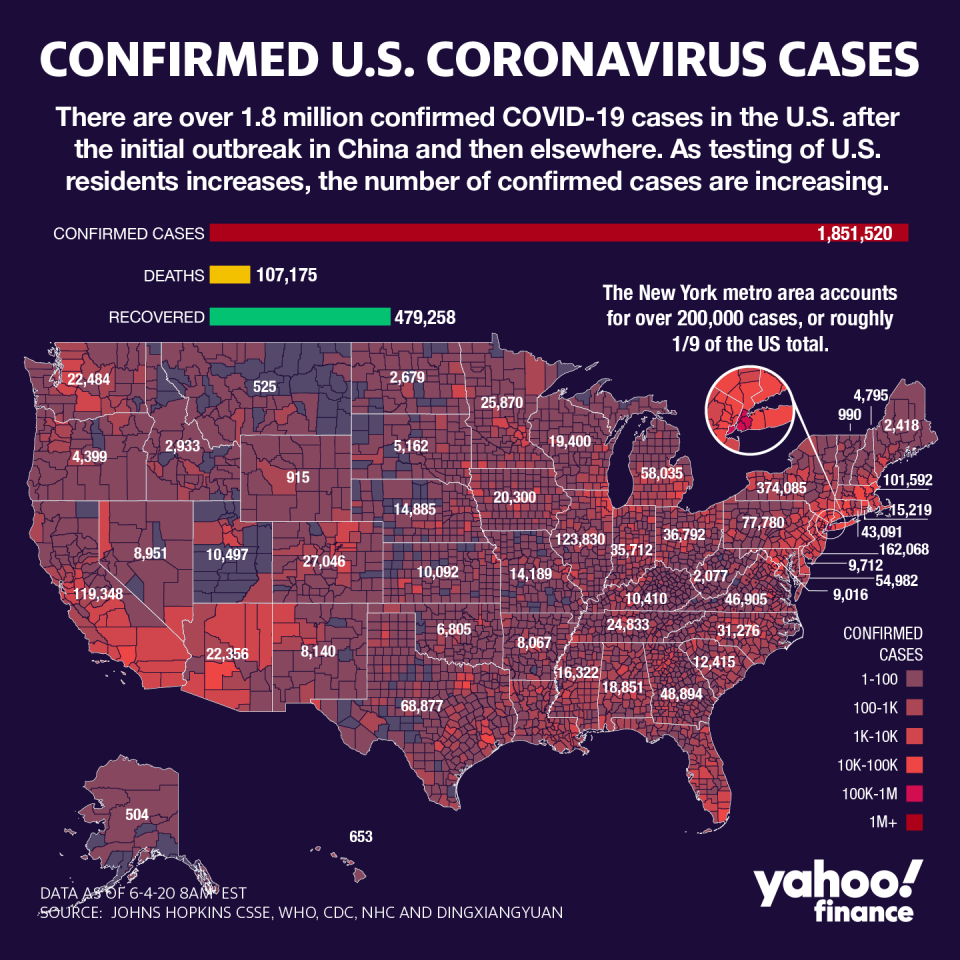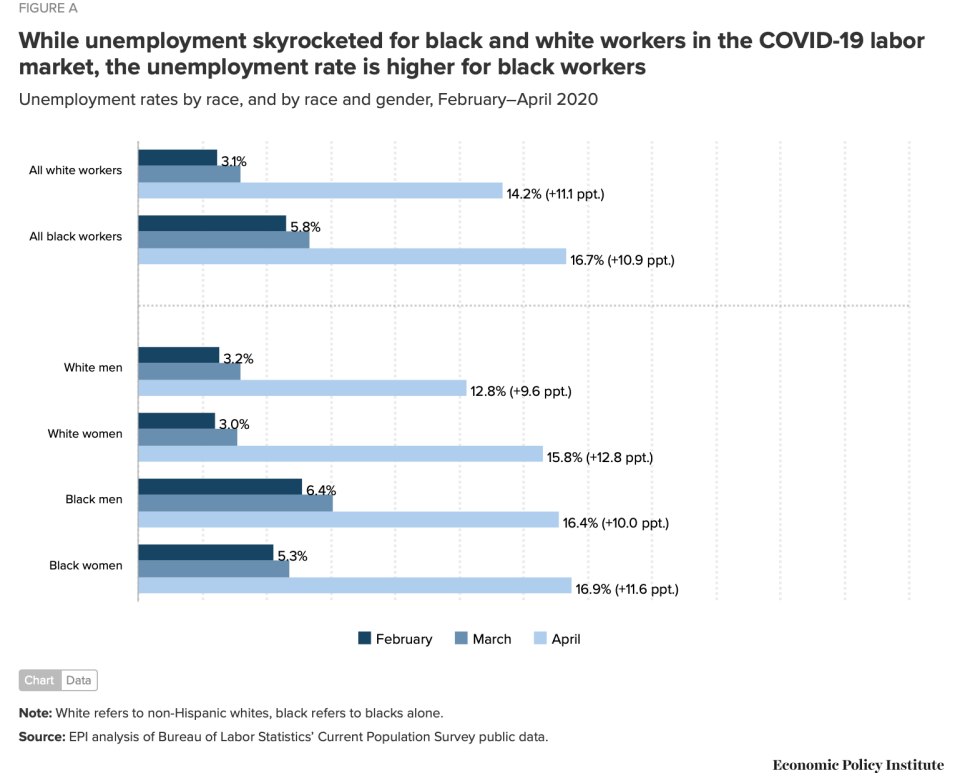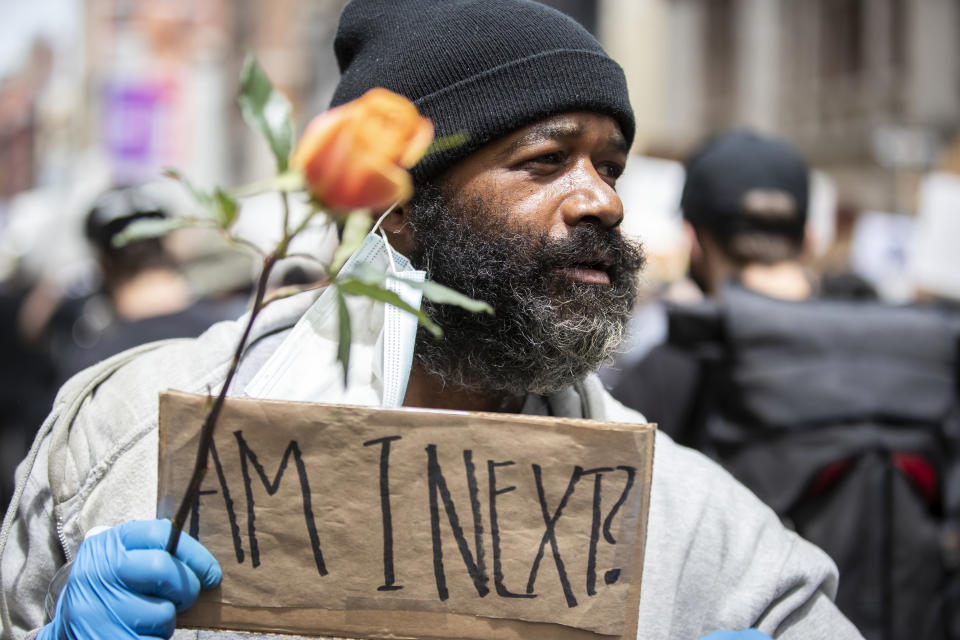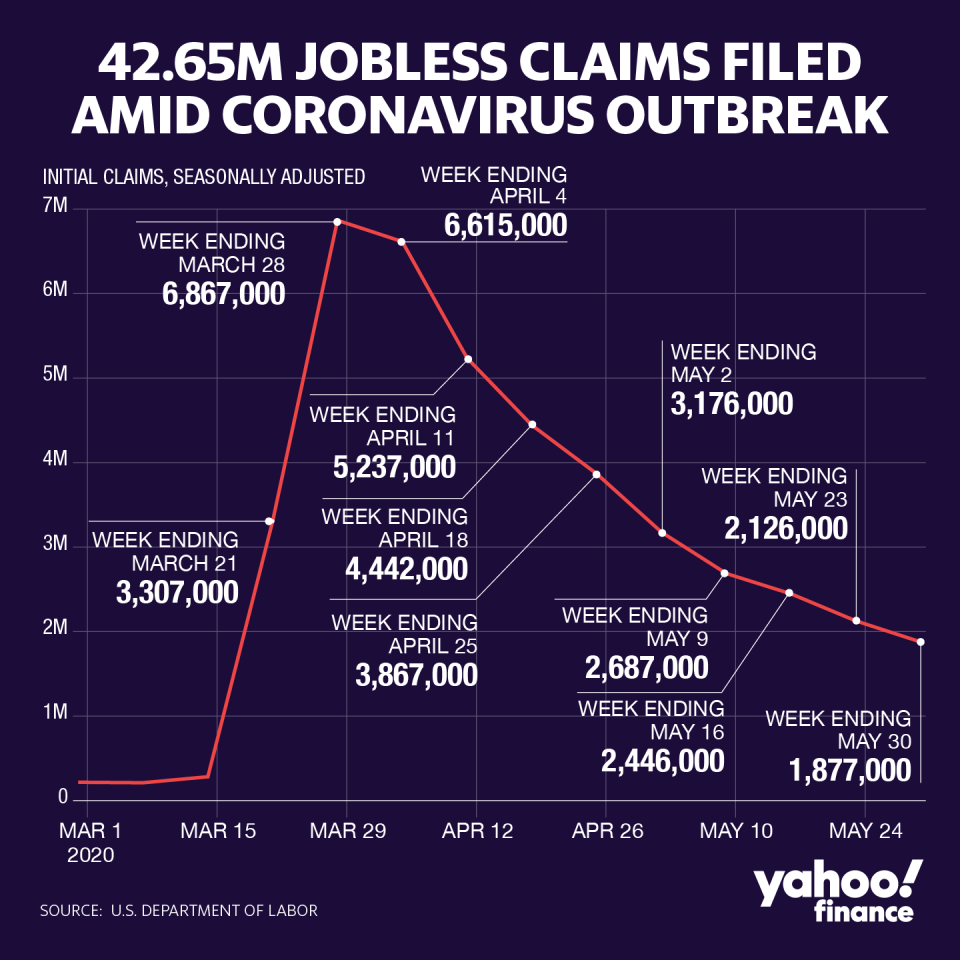America's job crisis amid coronavirus is having a 'disproportionate impact' on black Americans
Economists are anticipating a fifth of U.S. workers to be unemployed on Friday, and data shows that black Americans are being hit the hardest.
The May jobs report “will provide the first full view of the overall severity of the COVID-19 crisis,” Daniel Alpert, senior fellow and adjunct professor of macroeconomics at Cornell Law School, said in a statement provided to Yahoo Finance. And “attention should be paid to the disproportionate impact of this crisis on the Black/African American population.”
Money, Honestly podcast: How a layoff in the pandemic turned into a bankruptcy for one single mother
The coronavirus pandemic has caused suffering across the country, from the health effects of COVID-19 infection as well as the economic stress brought about by stay-at-home orders put in place to stem the virus.
Those measures have been hammering the U.S. economy, which has left millions of Americans out of work, filing for unemployment insurance week after week.

Economists expect this Friday’s jobs number to reflect that reality: Bank of America predicts payrolls to fall by 8 million and unemployment to rise to 19%, Credit Suisse expects non-farm payrolls to fall by 10 million and unemployment to rise to 20% and Capital Economics estimates employment to fall by 9 million in May, and the unemployment rate to climb to more than 20%.
While the unemployment rate for white Americans was 14.2% in April, Alpert noted, for black and African American workers, it was 16.7%, and for Hispanic and Latino workers, 18.9%.

Black Americans also on the front lines of coronavirus pandemic
A report by the Economic Policy Institute noted that black workers are also more likely to be on the front lines of the economy, working essential jobs.
Black Americans comprise of 14.2% of grocery, convenience, and drug store workers, 26% of public transit workers, and 18.2% of trucking, warehouse, and postal service workers.
Though they’re employed, they also face a higher risk of contracting COVID-19, the disease caused by coronavirus, while on the job. Furthermore, ongoing protests over police brutality against black Americans across the U.S. adds to the risk of coronavirus transmission.

And so, Alpert noted, “this crisis is disproportionately impacting racial and ethnic minority groups enormously, a phenomenon which we expect to see worsen in the May data.”
He added that employment-to-population ratio may be a more accurate indicator than unemployment rate at this point. The employment-population ratio measures how many workers are employed in proportion to the overall population of those who are of working age (as opposed to the unemployment rate, which compares the number of unemployed to the overall labor force.)

The overall employment-population ratio for the country was 51.3% in April 2020, meaning that 51.3% of the working age population was employed that month.
For blacks and African Americans, employment-population ratio has fallen to 48.8% in April — a drop from 58.9% in January — and that number is expected to fall even further, to post-war historic lows.
For white Americans, according to the previous jobs report, the ratio fell from 61.4% to 51.8% from January to April and from 64.9% to 51.3% for Hispanic and Latino workers.
“What I expect to see on Friday is more of the same ... we may seen an increase in gulf” between white, black, and Hispanic workers, Alpert told Yahoo Finance in a phone call.
—
Aarthi Swaminathan is a reporter for Yahoo Finance.
Read more:
'It’s a freaking circus': Unemployed Americans share tales of an overloaded system
'Struggling so severely': Coronavirus exposes the gulf between the haves and have-nots
Read the latest financial and business news from Yahoo Finance
Follow Yahoo Finance on Twitter, Facebook, Instagram, Flipboard, SmartNews, LinkedIn,YouTube, and reddit.

 Yahoo News
Yahoo News 
